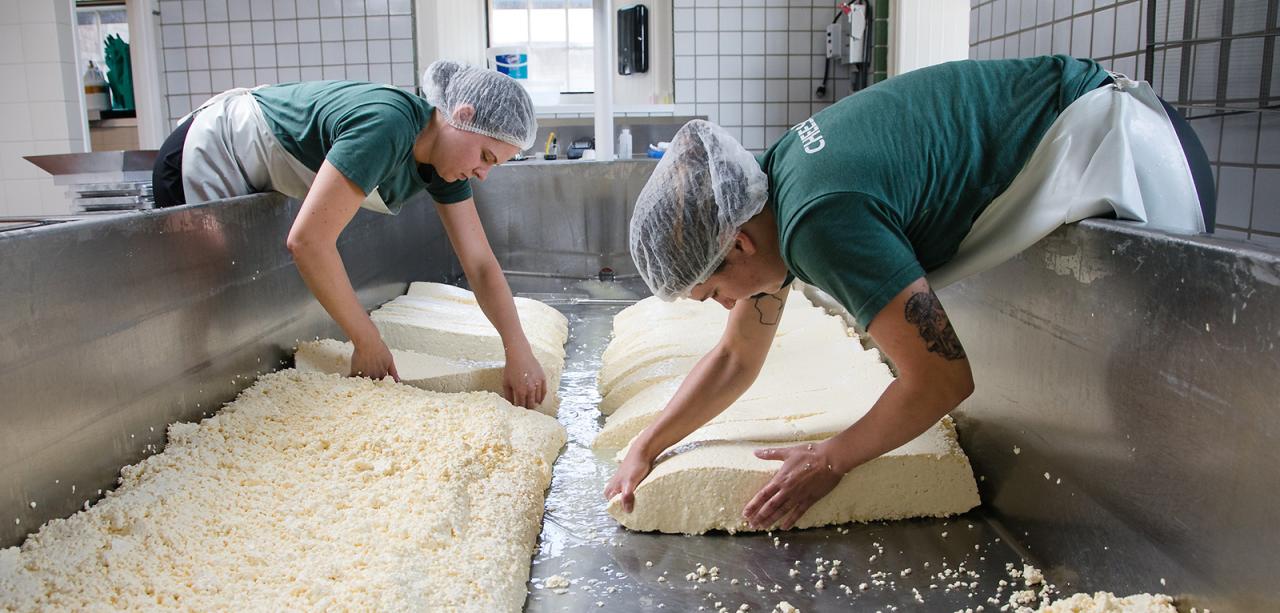Behind the Scenes with Cheese Makers Melbourne: Including Floridia Cheese
Behind the Scenes with Cheese Makers Melbourne: Including Floridia Cheese
Blog Article
Unlocking the Tricks of Artisanal Cheese Making: A Step-by-Step DIY Guide
In the world of culinary workmanship, artisanal cheese making stands as a testimony to the fragile equilibrium in between custom and development. As we embark on this trip to debunk the art of producing elegant cheeses, we are faced with a tapestry of tricks and skills waiting to be deciphered.
Selecting the Right Milk
When starting the trip of artisanal cheese making, the option of milk plays a critical duty in identifying the high quality and qualities of the last item. The type of milk selected impacts the flavor, structure, and generally account of the cheese. Raw milk, directly from the pet, is preferred by numerous artisanal cheesemakers because of its one-of-a-kind blend of enzymes, bacteria, and taste substances. However, using raw milk features dangers and guidelines, making pasteurized milk a much safer choice for beginners.
When choosing milk for cheese making, it is vital to consider the fat content. Greater fat web content in milk can cause a creamier and richer cheese, while lower fat web content may result in a drier and stronger structure. In addition, the source of the milk, whether from cows, goats, lamb, or buffalo, adds unique flavors and attributes to the cheese (Melbourne Made Cheese). Each type of milk brings its own subtleties, enabling for a variety of cheese ranges to be crafted based on the picked milk. Inevitably, the selection of milk is a fundamental decision that sets the foundation for a successful artisanal cheese-making endeavor.
Culturing and Coagulating
To start the cheese-making process, the vital actions of culturing and coagulating need to be meticulously carried out to transform milk right into curds and whey. The type of society made use of can substantially impact the taste, appearance, and ripening of the final cheese product.

The timing and temperature level control during culturing and coagulation are essential variables that influence the last outcome of celebrity. Appropriate implementation of these steps is important to make certain the wanted appearance, flavor, and consistency of the artisanal cheese being generated.
Draining and Pressing Curds
After the milk healthy proteins have coagulated and the curds have been reduced to launch whey, the following essential action in artisanal cheese making entails draining pipes and pressing the curds to attain the desired texture and consistency of the last cheese item. Draining is the procedure of separating the curds from the whey. This can be done by moving the curds right into a cheesecloth-lined colander or mold and allowing the whey to drain off naturally. The time for draining can vary relying on the kind of cheese being made and the preferred wetness web content.
Pushing assists expel any type of remaining whey and compacts the curds to form a solid cheese wheel. Appropriate pressing and draining are critical actions that significantly influence the quality and characteristics of the artisanal cheese being produced.
Aging and Flavoring Techniques
Carrying out precise aging and flavoring methods is essential in improving the depth and complexity of artisanal cheeses, raising their taste profiles to elegant degrees of improvement and refinement. Aging plays an important role in establishing the unique flavors and structures that identify artisanal cheeses.
Flavoring techniques likewise contribute considerably to the last preference of artisanal cheeses. Cheesemakers might pick to present extra tastes by including ingredients such as natural herbs, seasonings, or perhaps fruits right into celebrity during the manufacturing procedure. Furthermore, some cheeses are click for more cleaned or massaged with numerous fluids, such as brine or alcohol, to boost their tastes and appearances.
Wrapping and Keeping Cheeses

Verdict
In conclusion, mastering the art of artisanal cheese making entails carefully selecting the appropriate milk, complying with exact culturing and coagulating procedures, draining and pushing curds effectively, and using different aging and flavoring strategies. Bear in mind to wrap and keep your cheeses effectively to ensure ideal flavor and appearance development.
Each kind of milk brings its very own subtleties, permitting for a large array of cheese ranges to be crafted based on the selected milk.After the milk proteins her response have actually coagulated and the curds have been cut to release whey, the following crucial step in artisanal cheese making includes draining pipes and pressing the curds to attain the desired texture and consistency of the final cheese item. Most cheeses ought to be covered in wax paper or cheese paper to allow them to breathe while safeguarding them from drying out. For cheeses that need to proceed aging, such as bloomy rinds or cleaned rinds, ensure they are saved in an amazing atmosphere like a cheese cave or a fridge set to the suitable temperature level. By paying attention to the covering and storage of artisanal cheeses, cheese manufacturers and enthusiasts can maintain the integrity of these specials and totally enjoy their complicated flavors.
Report this page